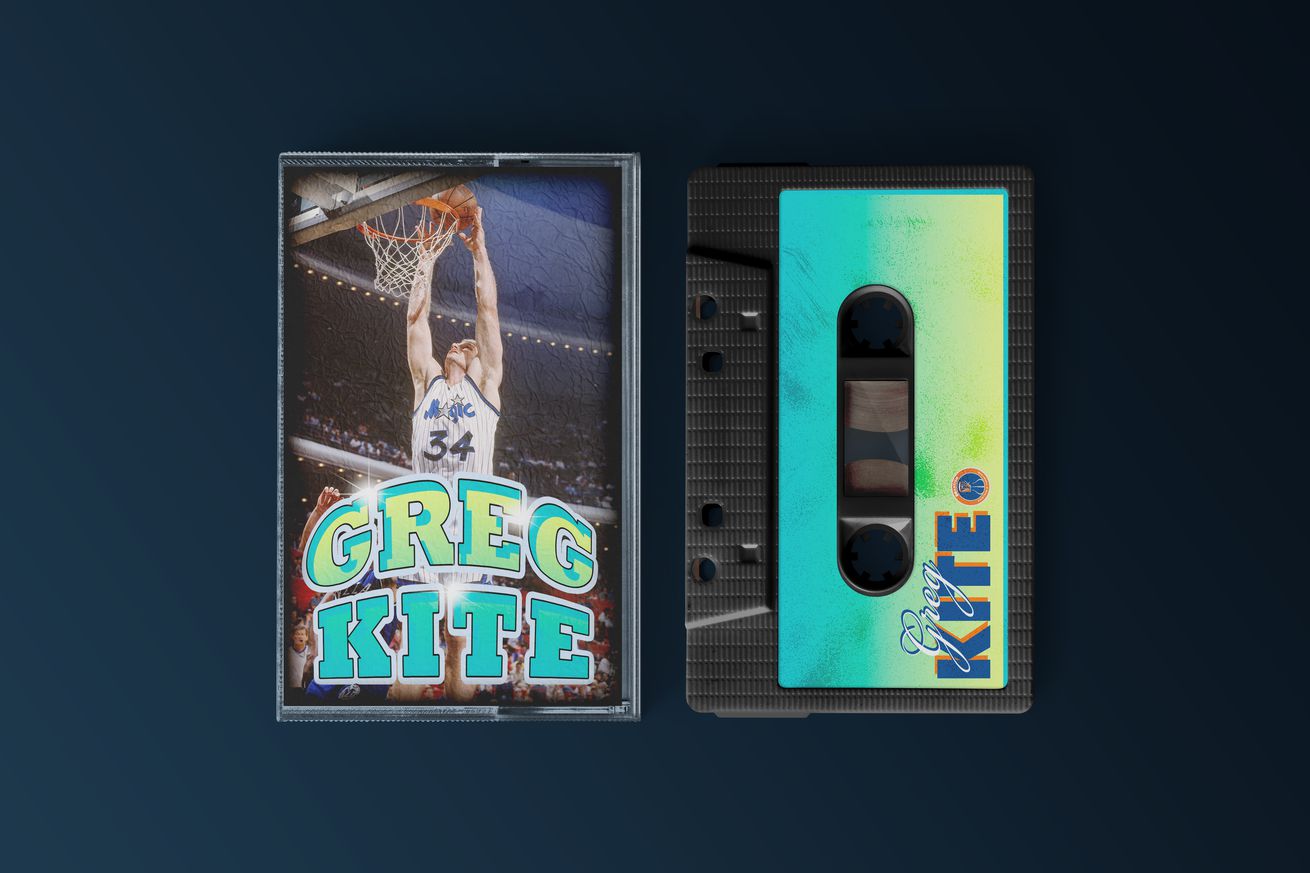
Talkin’ hoops, playing with Shaq, and for Coach Riley as a member of the 1994-95 Knicks.
In the second installment of this three-part interview series, 11-year NBA veteran and two-time champion Greg Kite takes us on a journey through his career following a four-year, two-championship run with the Boston Celtics.
Greg reflects on his time with the Orlando Magic, where he played alongside a rookie Shaquille O’Neal, and offers insights from his brief stint with the New York Knicks in 1995 under Coach Pat Riley.
If you missed part one, be sure to catch up here. Stay tuned for part three, as we get the inside scoop from Greg on what he is up to today and how he has become such a highly esteemed financial advisor.
Greg Kite P&T Interview, Part 2
After nearly four seasons and two championships with the Boston Celtics, Greg Kite was released from the only NBA team and city he had known midway through the 1987-88 season. But after just several days sitting out as a free agent, the Clippers were quick to sign him on February 3rd, 1988. While Kite was eager for the new opportunity, he quickly noticed upon his arrival in LA the stark contrast between playing for one of the league’s best teams, to one of the league’s worst. “The Clippers (and Celtics) were night and day. The Clippers were at the bottom of the league then, and it was night and day as far as the overall atmosphere with the organization and overall fan interest. In Los Angeles, the Lakers are the big thing, but even in L.A. the media attention wasn’t quite the same as back East.”
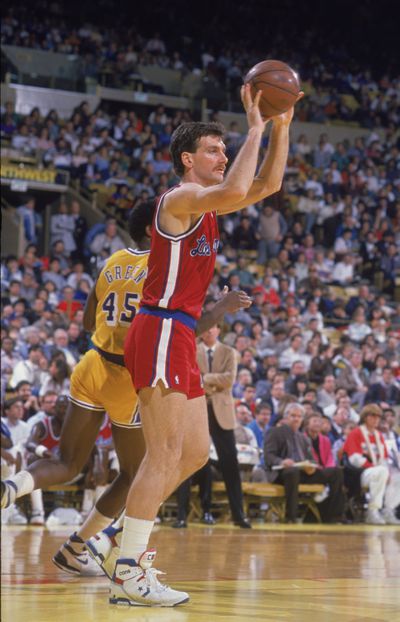
Although Kite was initially taken aback by the changes he experienced from his new team, he also found many positives in his new environment. “For me as a player, it was a great opportunity to play. When you’re a young player playing on a championship team there’s not a lot of room for mistakes. When I went to the Clippers, I got a lot more minutes and I started a lot more games. That was fun, and it helped me get more confidence and more skills and abilities and experiences as a player.”
However, after just a year and a half with the team, Kite once again found himself on the waiver wire midway through the 1988-89 season. “Towards the end of that (season), I had a year, and a half left on my contract that the Clippers took over, but they decided they wanted to look at some other people. With about 2 months left in the season, they let me go and Charlotte picked me up.” Kite once again found himself on the roster of one of the league’s worst teams, as well as the newest, but saw the many positives that others could have easily overlooked. “Charlotte was another situation where they didn’t have another center who commanded most of the minutes, so I got to go there and play a lot.
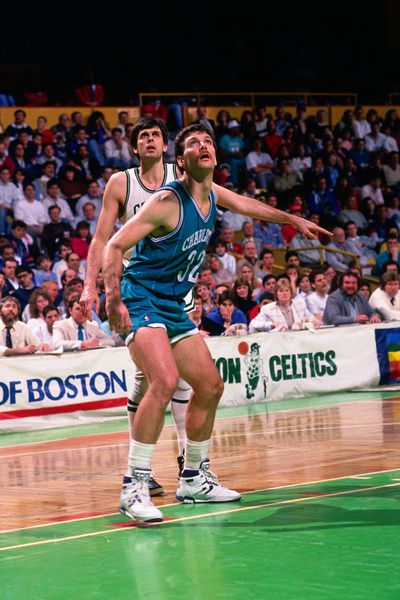
Photo by Dick Raphael/NBAE via Getty Images
After appearing in just twelve games for Charlotte in 1989, Kite once again found himself in a familiar situation. “I went from Charlotte to the Sacramento Kings the following year, and again, it was the same situation. Not a great team, they weren’t a playoff team. But I got to play a lot and start a lot.”
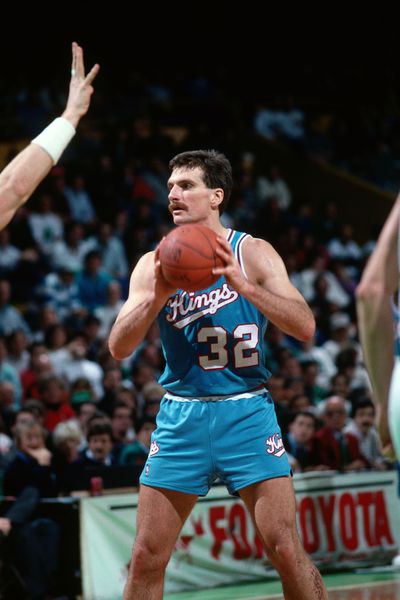
Photo by Dick Raphael/NBAE via Getty Images
After bouncing around between four teams in four years, Kite finally found stability with the Orlando Magic, calling the Magic Kingdom home from 1990 to 1994. “My first year with the Magic was their second year in the league. In my first year there, I started all 82 games, and then in my second year I started 72 games.”
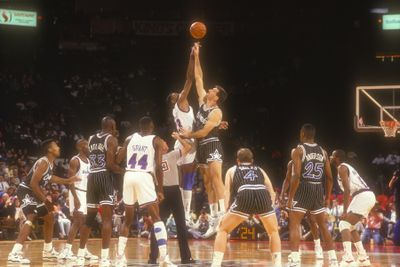
Photo by Mitchell Layton/Getty Images
Kite had become known around the league as a hard-nosed, scrappy veteran with a commitment to playing staunch defense. He was never shy about throwing an extra elbow or backing down from a fight and embodied the role of one of the league’s true enforcers with his 6’11”, 250-pound frame. Just ask Rony Seikaly! As a member of the Miami Heat in 1991, Seikaly learned firsthand that Kite was a force to be reckoned with. “I was a physical post player defensively, and a lot of guys didn’t like leaning against me or banging against me.” Kite stated, “Rony was a pretty decent scorer, and one of the key guys for the Heat then. The Heat and the Magic in the early days had a nice rivalry back then. Things had been back and forth, and I kinda lost it, and tackled him. We were down on the floor in a scuffle. But you know who got the best shots in? It was the Heat’s coach Kevin Loughery! Back when coaches could come off the bench to break up a fight, those old school coaches who played in the sixties and seventies knew that it was a great time for them to get some blows in.” Kite remembers, “Loughery got the best blows in at me while I was on the floor, and he was the one I got the maddest at and started to go after him, but I got restrained.”
Brouhaha’s aside, everything was going phenomenal for Kite at the O-Rena until one June night in 1992 that would forever change the landscape of the NBA. “My third year, they drafted a guy named Shaq and they gave him my starting job and they never gave me an explanation as to why.” Kite jokingly recounted, “It might have been something very deep in the personnel files, maybe I was insubordinate, or showed up late once,” Kite joked.
“We all knew (Shaq) was going to be a starter… even before he came in. Matt Guokas was our coach, and he had seen him play in person while scouting him.” Kite told how Coach Guokas first described Shaq to the team. “Matt had played with the Sixers when Wilt Chamberlain was still there. Wilt was about 28 years old, and Matt was a rookie. Matt said in regard to Shaq, that the only guy you can compare (Shaq) to physically is Wilt.
Before Shaq’s first career game, his teammates already knew they had something special in their new teammate. “When you look at All-Stars and Hall-of-Famers in the league, usually every ten to twenty years you can say this guy is a great player, but he is pretty similar to so-and-so. With Shaq, he was a guy who you might see every forty years! He had a unique combination of power, force, and the ability to move, combined with his size, length, and strength. He was phenomenal! Kite admitted, “I wasn’t smart enough a few times to get out of the way in practice. He practiced hard! I got a few stitches once or twice from Shaq,” Kite said laughing.
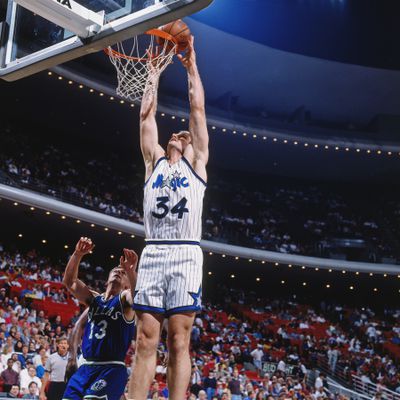
Photo by Nathaniel S. Butler/NBAE via Getty Images
While discussing Shaq’s immediate impact on the game, Kite was quick to highlight a stat that ‘90s fans certainly noticed on TV but might not have known the exact numbers of, as it wasn’t a stat officially tracked by the NBA. “This one stat is amazing. Back then, teams didn’t track dunks per game. But there was this one stat guy in Philly who did. Usually, the league leader was 1.75-2 dunks per game. I think it was Larry Nance for a couple of years before Shaq came in… Shaq came in, and he was dunking 4-5 times a game! “Kite explained, “Shaq could go around guys, or through guys, they could hang on to him like a Christmas ornament and he could still get to the basket. He was an incredible, once in an every 40–50-year, physical specimen, plus he had all the intangibles to be a winner.”
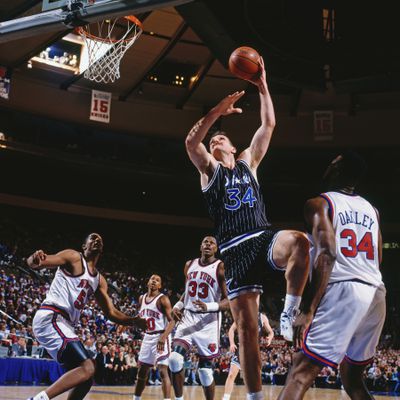
Photo by Nathaniel S. Butler/NBAE via Getty Images
Despite Shaq’s arrival, Kite remained a key role player off the bench for the Magic and an even bigger leader off the floor to the young team who desperately relied on his veteran leadership. Kite would appear in 64 games for the Magic during the 1992-93 season. During Kite’s 4th and final year with the Magic, he tore his Achilles in January of 1994 in a game against the Knicks.
After a disappointing first-round playoff elimination to the Indiana Pacers in 1994, the Magic sought to fill the gaps in what was nearly a perfect roster. They signed a group of younger players, brought in long-time veteran Wayne “Tree” Rollins as a player/assistant coach to fill in for the injured Kite, and added former Chicago Bulls All-Star power forward Horace Grant. The writing was on the wall for Kite, and the Magic officially released him before the start of the 1994-95 regular season.
As the 1994-95 season began, Kite found himself in uncharted territory for the first time in over a decade—unemployed. “I was just waiting around to play or get picked up, and then in December of 1994, Herb Williams broke his hand and was out for about 6-8 weeks, so (Knicks Head Coach) Pat Riley brought me in to be a backup to Patrick Ewing.
Like anyone else who has ever crossed paths with Pat Riley, Kite holds him and his coaching style in the highest admiration. “Riley’s practices were legendary. They’re intense and hard. I hadn’t played really much in nearly a year. I had gotten into great shape from those practices, plus I had plenty of time to do other stuff with the conditioning coach. But I remember during one of those practices, Riley was harping back at those Celtics days yelling at me “Let me see you run like you used to with the Celtics.” Kite laughs while telling the story. “He was famous for having those blue index cards with the blue marker on them with everything you’re going to do in practice, but they were to the spot and obviously his track record is proven”
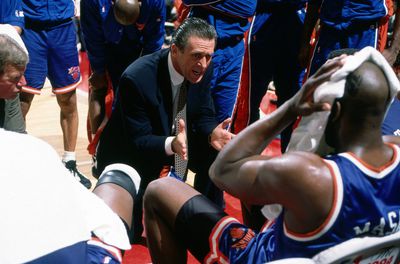
Photo by Andrew D. Bernstein/NBAE via Getty Images
After his brief stint with the New York Knicks and another short nine-game stint with the Indiana Pacers that same season, Kite’s NBA playing days came to an end. Reflecting on his NBA career, Kite feels nothing but triumphant. “It’s pretty phenomenal to play that long. I never retired, but they just got tired of me,” Kite again joked. “I got to play until I was 35. I actually played over 12 seasons, but the NBA has a cutoff date that if you’re not on a roster, as I was in-between teams, they don’t count that as an official year.”
Several years after his retirement, while volunteering at a National Basketball Players Association event, Kite indirectly discovered something remarkable about his career—an achievement that only a small percentage of NBA players can share with him. “I was helping out as a mentor with the National Basketball Players Association at the Top 100 camp. They were talking to the kids about how in 75 years, there were roughly 7,000 players who had played in the NBA. Then they broke it down by how many who had played 5 years or more, 10 years or more, 15 years or more…and 10 years or more was like 950 players in 75 years… So I was fortunate and blessed to go that long. I had guys that I came out of high school with who were McDonald’s All-Americans, Steve Stipanovich, Ralph Sampson, and Sam Bowie who were a lot better players than I was as a pro or college player, but their careers didn’t last as long due to injuries.”
Stay tuned for Part 3 in which Greg talks about what he currently is up to in the world of finance and investing.
